#Tripolitania
Text

The Roman Theatre of Sabratha, LIBYA
625 notes
·
View notes
Text
“ Sidi Merbat, 16 ottobre 1942
Oggi ho provato una viva e stupida emozione, scorgendo un’automobile scendere alla spiaggia: a bordo c’erano un uomo e una ragazza bionda, molto bella pareva da lontano. Scesi anch’io subito a mare. Uno dei miei compiti è quello di vietare a tutti i civili l’accesso alla spiaggia, che è zona militare. I due stavano già facendo il bagno, un po’ al largo. La macchina era una delle vetture della residenza: si trattava certo di un funzionario, che aveva portato con se la moglie, o la fidanzata. Rimasi lì ad aspettare, invidiando la fortuna di quell’uomo. Sarebbe meraviglioso vivere qui con una compagna, volerle bene e fare il bagno insieme. Quando essi accennarono a tornare a riva, io mi ritirai senza farmi vedere.
I militi poi mi dissero che la ragazza era una di quelle del postribolo. Son rimasto molto deluso. Avevo immaginato qualcosa di più bello e puro, e ne avevo goduto anch’io, nonostante l’invidia. “
Giuseppe Berto, Guerra in camicia nera, Garzanti (collana Garzanti per tutti, n° 200), 1969¹; p. 29.
[1ª Edizione originale: Garzanti, 1955]
#Giuseppe Berto#leggere#citazioni#Sidi Merbat#Nordafrica#Guerra in camicia nera#Cirenaica#Tripolitania#diario di guerra#seconda guerra mondiale#amore#passioni#passione#Libia#letteratura italiana#XX secolo#mar Mediterraneo#sentimenti#narrativa italiana#Storia del '900#amanti#invidia#emozione#intellettuali italiani#scrittori veneti#emozioni#spiaggia#libri#mare#delusione
6 notes
·
View notes
Text
Un libro violentato. Gli scrittori applaudono
La notizia mi giunge per vie strane, sotterranee e quasi disparate. E’ come se i pennivendoli facessero fatica a parlarne. La stanchezza insiste: evita la verifica, non andare a fondo. Stavolta almeno sii pietoso con te stesso.Anche stanotte, come da qualche tempo, non esiste più il confine meraviglioso tra notte e giorno; la resurrezione sognante e liberatoria della luce rosea del sole, che in…

View On WordPress
#Aiania Shibli#“Tripoli bel sol d’amore”#Belle Époque#Can Can#Giordano Bruno#Sant&039;ufizio#Tripolitania
0 notes
Text
Italo Balbo. La Crociera coloniale
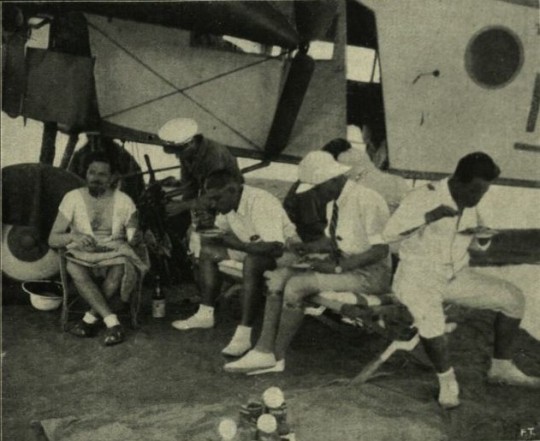
View On WordPress
#Aldo Pellegrini#Ca.101#cirenaica#Crociera#italo balbo#libia#Rodi#S62#Stefano Cagna#Tibesti#Tripolitania
0 notes
Photo

“Italy’s Future Queen,” Toronto Star. June 15, 1932. Page 1.
---
The Princess of Piedmont (Princess Marie-Jose of Italy) recently photographed at Ghadames, Tripolitania, during a visit. Throughout her stay she made a point of wearing native costumes. She will be the next Queen of Italy.
#marie-josé of belgium#princess of piedmont#principessa di piemonte#royal visit#heir to the throne#italian royal family#kingdom of italy#fascist italy#italian libya#ghadames#tripolitania
0 notes
Text
Tripolitania ma solo a 180°
Ho cercato di postare questo ma dritto...

e tumblr...

non so se valutare la cosa positivamente o negativamente.
1 note
·
View note
Text
Historically, Jews and Muslims have lived extremely peacefully when Muslims were the majority:
622 - 627: ethnic cleansing of Jews from Mecca
and Medina, (Jewish boys publicly inspected for pubic hair. if they had any, they were executed)
629: 1st Alexandria Massacres, Egypt
622 - 634: extermination of the 14 Arabian Jewish tribes
1106: Ali Ibn Yousef Ibn Tashifin of Marrakesh decrees death penalty for any local Jew, including his Jewish Physician, and Military general.
1033: 1st Fez Pogrom, Morocco
1148: Almohadin of Morocco gives Jews the choice of converting to Islam, or expulsion
1066: Granada Massacre, Muslim-occupied Spain
1165 - 1178: Jews nation wide were given the choice (under new constitution) convert to Islam or die, Yemen
1165: chief Rabbi of the Maghreb burnt alive. The Rambam (Maimonides) flees for Egypt.
1220: tens of thousands of Jews killed by Muslims after being blamed for Mongol invasion, Turkey, Iraq, Syria, Egypt
1270: Sultan Baibars of Egypt resolved to burn all the Jews, a ditch having been dug for that purpose; but at the last moment he repented, and instead exacted a heavy tribute, during the collection of which many perished.
1276: 2nd Fez Pogrom, Morocco
1385: Khorasan Massacres, Iran
1438: 1st Mellah Ghetto massacres, North Africa
1465: 3rd Fez Pogrom, Morocco (11 Jews left alive)
1517: 1st Safed Pogrom, Ottoman Palestine
1517: 1st Hebron Pogrom, Ottoman Palestine Marsa ibn Ghazi Massacre, Ottoman Libya
1577: Passover Massacre, Ottoman empire
1588 - 1629: Mahalay Pogroms, Iran
1630 - 1700: Yemenite Jews under strict Shi'ite 'dhimmi' rules
1660: 2nd Safed Pogrom, Ottoman Palestine
1670: Mawza expulsion, Yemen
1679 - 1680: Sanaa Massacres, Yemen
1747: Mashhad Masacres, Iran
1785: Tripoli Pogrom, Ottoman Libya
1790 - 92: Tetuan Pogrom. Morocco (Jews of Tetuuan stripped naked, and lined up for Muslim perverts)
1800: new decree passed in Yemen, that Jews are forbidden to wear new clothing, or good clothing. Jews are forbidden to ride mules or donkeys, and were occasionally rounded up for long marches naked through the Roob al Khali dessert.
1805: 1st Algiers Pogrom, Ottoman Algeria
1808 2nd 1438: 1st Mellah Ghetto Massacres, North Africa
1815: 2nd Algiers Pogrom, Ottoman Algeria
1820: Sahalu Lobiant Massacres, Ottoman Syria
1828: Baghdad Pogrom, Ottoman Iraq
1830: 3rd Algiers Pogrom, Ottoman Algeria
1830: ethnic cleansing of Jews in Tabriz, Iran
1834: 2nd Hebron Pogrom, Ottoman Palestine
1834: Safed Pogrom, Ottoman Palestne
1839: Massacre of the Mashadi Jews, Iran
1840: Damascus Affair following first of many blood libels, Ottoman Syria
1844: 1st Cairo Massacres, Ottoman Egypt
1847: Dayr al-Qamar Pogrom, Ottoman Lebanon
1847: ethnic cleansing of the Jews in Jerusalem, Ottoman Palestine
1848: 1st Damascus Pogrom, Syria
1850: 1st Aleppo Pogrom, Ottoman Syria
1860: 2nd Damascus Pogrom, Ottoman Syria
1862: 1st Beirut Pogrom, Ottoman Lebanon
1866: Kuzguncuk Pogrom, Ottoman Turkey
1867: Barfurush Massacre, Ottoman Turkey
1868: Eyub Pogrom, Ottoman Turkey
1869: Tunis Massacre, Ottoman Tunisia
1869: Sfax Massacre, Ottoman Tunisia
1864 - 1880: Marrakesh Massacre, Morocco
1870: 2nd Alexandria Massacres, Ottoman Egypt
1870: 1st Istanbul Pogrom, Ottoman Turkey
1871: 1st Damanhur Massacres,Ottoman Egypt
1872: Edirne Massacres, Ottoman Turkey
1872: 1st Izmir Pogrom, Ottoman Turkey
1873: 2nd Damanhur Massacres, Ottoman Egypt
1874: 2nd Izmir Pogrom, Ottoman Turkey
1874: 2nd Istanbul Pogrom, Ottoman Turkey
1874: 2nd Beirut Pogrom,Ottoman Lebanon
1875: 2nd Aleppo Pogrom, Ottoman Syria
1875: Djerba Island Massacre, Ottoman Tunisia
1877: 3rd Damanhur Massacres,Ottoman Egypt
1877: Mansura Pogrom, Ottoman Egypt 1882: Homs Massacre, Ottoman Syria
1882: 3rd Alexandria Massacres, Ottoman Egypt
1890: 2nd Cairo Massacres, Ottoman Egypt
1890, 3rd Damascus Pogrom, Ottoman Syria
1891: 4th Damanahur Massacres, Ottoman Egypt
1897: Tripolitania killings, Ottoman Libya
1903&1907: Taza & Settat, pogroms, Morocco
1890: Tunis Massacres, Ottoman Tunisia
1901 - 1902: 3rd Cairo Massacres, Ottoman Egypt
1901 - 1907: 4th Alexandria Massacres,Ottoman Egypt
1903: 1st Port Sa'id Massacres, Ottoman Egypt
1903 - 1940: Pogroms of Taza and Settat, Morocco
1907: Casablanca, pogrom, Morocco
1908: 2nd Port Said Massacres,Ottoman Egypt
1910: Shiraz blood libel
1911: Shiraz Pogrom
1912: 4th Fez Pogrom, Morocco
1917: Baghdadi Jews murdered by Ottomans
1918 - 1948: law passed making it illegal to raise an orphan Jewish, Yemen
1920: Irbid Massacres: British mandate Palestine
1920 - 1930: Arab riots, British mandate Palestine
1921: 1st Jaffa riots, British mandate Palestine
1922: Djerba Massacres, Tunisia
1928: Jewish orphans sold into slavery, and forced to convert to Islam by Muslim Brotherhood, Yemen
1929: 3rd Hebron Pogrom British mandate Palestine.
1929 3rd Safed Pogrom, British mandate Palestine.
1933: 2nd Jaffa riots, British mandate Palestine.
1934: Thrace Pogroms, Turkey
1936: 3rd Jaffa riots, British mandate Palestine
1941: Farhud Massacrs, Iraq
1942: Mufti collaboration with the Nazis. plays a part in the final solution
1938 - 1945: Arab collaboration with the Nazis
1945: 4th Cairo Massacre, Egypt
1945: Tripolitania Pogrom, Libya
1947: Aden Pogrom
#antisemitism#israel#terrorism#gaza#palestine#jumblr#ישראל#jewish#judaism#historic antisemitism#antizionism is antisemitism#Ottoman Palestine was NOT a great place for Jews
660 notes
·
View notes
Photo

The installation of the Vandals in Roman Africa
“La fin d’un empire”, Claire Sotinel, Belin, 2019
by cartesdhistoire
With Gaiseric, their king since 428, the Vandals, the last hostile barbarian group, entered Africa in order to find a rich territory, sufficiently away from the imperial armies to be able to live there in complete independence: in May 429 their army of several thousand men, accompanied by their families, crossed the Strait of Gibraltar. They progressed towards the east over 2000 km, sweeping away the Roman troops and leaving the memory of a particularly murderous expedition. For Rome, losing Africa means losing the richest province in the West and the City's source of supply. But the counter-offensives did not make it possible to defeat the Vandals even if the siege of Hippo between June 430 and August 431, during which its bishop Saint Augustine died, ended in a failure for the barbarians.
Faced with millions of African Romans, the Vandals were few in number (less than 100,000) but they were invaders who had little interest in signing a fetus with Rome. Finally, the latter was still signed on February 11, 435; the Vandals received land around Hippo while the Romans kept the largest part of Africa, the most urbanized and the richest. But Gaiseric, converted to Arianism, went beyond his status as federated king by adopting an anti-Catholic and anti-Roman aristocratic policy: in addition to the destruction of churches, expulsions and executions of clerics, was added the confiscation of ecclesiastical or senatorial lands for transform the Proconsular into an area of Vandal settlement and Arian religion.
On October 19, 439, Gaiseric took Carthage by surprise and then occupied Byzacene and Tripolitania. Rome negotiated in 442: the Vandals occupied proconsular Africa, Byzacene and the eastern part of Numidia while the king agreed to deliver grain to supply Rome. He respected this treaty for 20 years but the loss of Africa was no less a disaster for Rome.
76 notes
·
View notes
Photo

GHADAMES, LIBYA - OCTOBER 29
Woman with Tuareg rings on the fingers, Tripolitania, Ghadames, Libya on October 29, 2007 in Ghadames, Libya. (Photo by Eric Lafforgue)
35 notes
·
View notes
Text
NECROPOLIS DE AGALDAR
Pablo Deluca
Antigua necrópolis túmulo-piramidal de Sedeinga (Nubia, 1º milenio a.C.) (V. Francigny, 2013) (ampliar imágenes)
En ella se conjugan elementos arquitectónicos líbico-egipcios con autóctonos de la zona. Se observan ciertas similitudes con la necrópolis tumular de La Guancha (Gáldar, Gran Canaria). Alrededor del 1070 a.C. llegan al trono egipcio los soberanos libios que gobernaron hasta el 715 a.C., cuyos herederos de la dinastía XXII y siguientes someten la mayor parte de Nubia (sur de Egipto y norte de Sudán). Durante el reinado del soberano libio Psusenes II, a partir del 950 a.C., comienza la Era Bereber o Amazigh que marca el calendario. La dinastía XXII, de origen libio, transcurre entre el 945 y el 715 a.C. durante el Tercer período intermedio de Egipto y comienza con el reinado del soberano libio Sheshonq I (945-924 a.C) que se hace proclamar faraón con poblaciones líbicas de la tribu mashauash, ya asentados en el delta del Nilo (fuente: Wikipedia). Sus últimos gobernantes son coetáneos de los dignatarios de las dinastías XXIII, XXIV y XXV. A partir de mediados del s.VIII a.C. comienzan los movimientos migratorios de dichas poblaciones líbicas hacia el oeste, retornando hacia sus zonas de origen, actual Libia (Cirenaica y Tripolitania) y, paulatinamente, hacia el resto de la Tamazgha continental alcanzando el Sahara Central, la costa norte y las regiones más al occidente.
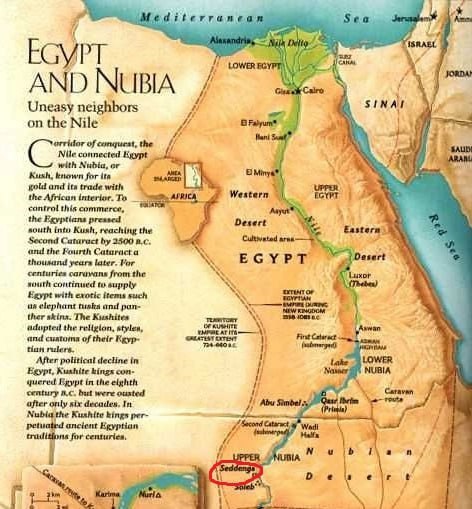

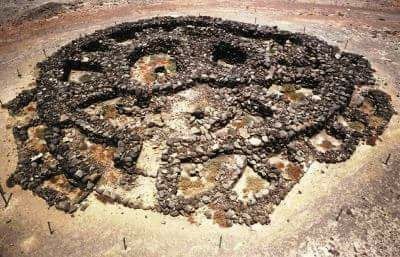
#necropolis#aborigenous#indigenous#culture#history#genocide#native#unesco#united nations#international criminal court#cou penal international#corte penal internacional#aborigines#indigenas#cultura#historia#genocidio#nativos#naciones unidas#canarias tiene identidad cultural propia#canarias la colonia mas antigua del mundo#descolonizacion de canarias#canarias#onu#islas canarias#canary islands#egipto#canarii#canarios#amazigh
10 notes
·
View notes
Text
" Il 1° marzo 1896 un corpo di spedizione di diecimila soldati guidati dal generale Baratieri attaccò ad Adua un esercito di centoventimila etiopi guidati da Menelik. L’Italia subì una pesantissima sconfitta, lasciando sul terreno quasi cinquemila morti. Questa vittoria permise all'Etiopia di rimanere indipendente e insegnò ai popoli africani che gli invasori potevano essere sconfitti. L’Italia cercò allora di mettere le mani sulla Libia, con un corpo di spedizione italiano che sbarcò a Tripoli il 5 ottobre 1911. Ma l’invasione della Tripolitania e della Cirenaica da parte di un corpo militare di oltre centomila soldati italiani fece scattare la rivolta araba. Ne seguì una feroce repressione da parte italiana: migliaia di libici furono impiccati, fucilati, deportati. La resistenza, però, non si piegò e durò oltre vent’anni, nonostante la brutalità della repressione, soprattutto sotto la dittatura di Mussolini.
Nel 1930, per ordine del Duce, per isolare i partigiani, vennero deportati dalla Cirenaica e rinchiusi in quindici campi di concentramento almeno centomila libici, in gran parte poi fucilati o impiccati. Fu impiegata anche l’aeronautica, su ordine di Mussolini, per sterminare le popolazioni ribelli, utilizzando le armi chimiche (gas asfissianti e bombe all'iprite). Nel 1931 il leader della ribellione, Omar al-Mukhtar (il “Leone del deserto”), fu individuato e catturato e, dopo un processo sommario, impiccato davanti a ventimila libici. È stata una delle più feroci repressioni coloniali, che costò la vita a oltre centomila persone.
Fu allora che Mussolini, dopo aver sottomesso la Libia, decise nel 1934 di conquistare l’Etiopia. Si trattò della più grande spedizione coloniale con cinquecentomila uomini, trecentocinquanta aerei e duecentocinquanta carri armati. Più che una guerra di conquista coloniale, fu una guerra di distruzione del popolo etiope. "
Alex Zanotelli, Lettera alla tribù bianca, Feltrinelli (collana Serie Bianca); prima edizione marzo 2022. [Libro elettronico]
#Alex Zanotelli#letture#leggere#libri#citazioni#Eritrea#Lettera alla tribù bianca#Somalia#umanità#Libia#Padre Alessandro Zanotelli#Menelik#Etiopia#Adua#missionari comboniani#popoli africani#preti di strada#Africa#colonialismo italiano#Storia dell'Africa#società africane#Tripolitania#Cirenaica#Omar al-Mukhtar#antifascismo#il leone del deserto#Rodolfo Graziani#antimilitarismo#Pietro Badoglio#intellettuali italiani
19 notes
·
View notes
Text
This is one of the most smirk worthy moments of the first volume of Charles de Gaulle's war memoirs:
"... on October 7th [1941] I addressed a note to Mr. Churchill to update him on our wishes and means [to have the Free French engaged in the North African front]... At the same time, I wrote to general Auchinleck, commander in chief of the east, to remind him of how much we wanted our troops to fight in Libya... On October 9th I visited Mr. Margesson, War minister of Great Britain, and I begged him to intervene. Finally, on October 30th, I instructed general Catroux on the conditions in which it was convenient that our forces were employed, that is, in big units.
I did not receive any British response until November 27th. It was addressed by general Ismay and Mr. Churchill. Their letter was the equivalent to a rotund rejection, as polite as it was sharp. To explain their refusal, our allies appealed to "the dispersion of the French units across different spots in Syria", the fact that "they were not trained to act as divisions or brigades", and finally, "the insufficiency of their equipment". They expressed, however, the wish that, sometime in the future, the question could be re-evaluated.
The English command was evidently planning on achieving the conquest of Libya and ending Rommel without the French. It is true that they had there considerable land and air forces, and that they believed admiral Andrew Cunningham -magnificent chief and sailor- to be in a position to do more than miracles, by intercepting the communications between Italy and Tripolitania.
It is to be easily imagined the disappointment that the English answer produced in me. I could not allow our troops to remain inactive for time indefinite, while the fate of the world was being sorted in battle. I would rather risk a change of direction. And so, then, I called Mr. Bogomolov and I asked him to make his government know that the National Comittee wished for some French forces to participate directly in the allied operations on the Eastern Front, in case the North African theater was closed to them. I, naturally, made no secret in London of my negotiation.
Even before I received an answer from Moscow, the British intentions had already changed. On December 7th, Mr. Churchill wrote to me a warm letter to tell me that "he had just learned how much general Auchinleck wished to employ a Free French brigade in the Cirenaic operations". "I know", the Prime Minister added, "that this intention matches your own wishes. I am also aware the eagerness your men have of meeting the German face to face."...
At Cairo, Catroux arranged then, with general Auchinleck, the departure towards Libya of the first light division, while Koenig, in charge of negotiating the details, obtained from our allies, a useful bonus in anti-tank materials, anti-aerial guns, and means of transport...
But, if the first light division got an opportunity, nothing was being done for the second one, which languished in the East. And I was determined to see that one taking part as well in the operations. Precisely, on December 10th, Mr. Bogomolov had come to tell me that my project of sending French troops to Russia had been warmly received by his government, and that it was willing to facilitate to our forces on the spot all the necessary material. I began, then, to consider the expedition East, of not only the aviation group Normandie [which, according to De Gaulle, was the only element of the Western allies that fought on the Eastern Front], but of the second light division as well. This one, departing from Syria through Baghdad, would cross Persia in trucks and then, from Tabriz, would be transported by train to the Caucasus... On December 29th I wrote to general Ismay communicating to him my intentions, while at the same time giving the necessary instructions to general Catroux. The second light division was to depart on March 15th towards the Caucasus, unless it was admitted before that to Libya.
The British command opposed this project of moving this unit to Russia with all the possible objections. But in Moscow, on the contrary, the Soviets made a deal of it. Molotov speaking to Garreau, and Panfilov to Petit, asked us to put it in practice. Mr. Eden, once acquainted with this, entered the fray and wrote to me to support the point of view of the English military authorities. I could do nothing but defend my own, and it was the one that in the end was adopted by the end of February by the allied command. Ismay communicated it to me. Auchinleck asked Catroux to put at his disposition the second light division. This one left Syria and arrived at Libya the last days of March.
De Gaulle: you are sorry you think my divisions aren't good enough? That that is the reason why you cannot include them? No problem, I'm gonna ask Stalin if they are too poor for him as well. Well, well, well, would you look at that, apparently the Russians would be delighted and can provide what we are lacking. Oh, now they are good enough for the desert campaign all of a sudden? That's what I thought.
Iconic.
#WWII#Charles de Gaulle#History#the more I read the more impressed I am that this guy managed to get anything done
3 notes
·
View notes
Text
Pillole di Seconda Guerra Mondiale: 29 gennaio
1941 – Africa settentrionale. Gli italiani abbandonano Derna e l’intera Cirenaica per costituire una solida linea difensiva al confine con la Tripolitania.
1942 – Africa settentrionale. Le truppe italo-tedesche riconquistano Bengasi maggior centro della Cirenaica.
1943 – Fronte orientale. Inizia l’operazione Galoppo, l’offensiva generale sovietica in direzione del Dniepr. Dopo aver respinto…
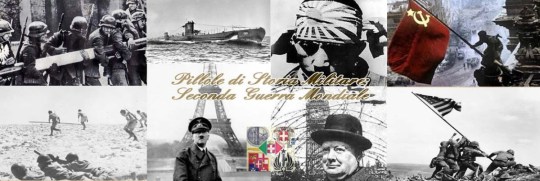
View On WordPress
#ww2#24 gennaio 1940#24 gennaio 1941#24 gennaio 1942#24 gennaio 1943#24 gennaio 1944#24 gennaio 1945#Battaglia di Korsun#Conferenza di Casablanca#Conferenza di Wannsee#operazione Reinhard#Reinhard Heydrich#second world war#Seconda guerra mondiale#Soluzione finale
2 notes
·
View notes
Text
Nations Of The World Retro: 1914
Round One Matches
1. Colombia vs British Honduras
2. Nicaragua vs South Orkney Islands
3. Amoy vs Togoland
4. Italian Somaliland vs Luxembourg
5. Chongqing vs French Indochina
6. Emirate of Afghanistan vs Persia
7. Uruguay vs South Shetland Islands
8. Khiva vs Union Islands
9. Federated Malay Islands vs Réunion
10. Bahama Islands vs New Zealand
11. Ottoman Empire vs Spain
12. Suzhou vs Monaco
13. United Kingdom of Great Britain and Ireland vs Straits Settlements
14. Kingdom of Italy vs French Madagascar
15. Portuguese East Africa vs Panama Canal Territory
16. Saint Barthélemy vs Netherlands
17. Guernsey vs Alaska
18. Bechuanaland vs Barbados
19. Ethiopia vs Curaçao and Dependencies
20. Midway Atoll vs Brunei
21. Saint Martin vs German East Africa
22. Amoy vs Sverdrup Islands
23. Sulu vs Northern Rhodesia
24. Serbia vs Panama
25. German Kiautschou vs Norway
26. British Guiana vs Sikkim
27. Falkland Islands vs Argentina
28. Ha'il vs Mexico
29. French Guiana vs British East Africa
30. Switzerland vs Seychelles
31. Italian Tripolitania vs Quita Sueño Bank
32. Italian Cyrenaica vs American Samoa
33. North Borneo vs Portuguese Guinea
34. Portuguese India vs British Jamaica
35. Portuguese Sao Tomé and Principe vs Kwantung
36. Jiujiang vs Zanzibar
37. Karafuto vs Costa Rica
38. France vs Hawaii
39. Jarvis Island vs British Winward Islands
40. Terengganu vs Surinam
41. British Trinidad and Tobago vs Belgium
42. Newfoundland vs Ubangi-Shari
43. Palmyra Atoll vs Romania
44. Fernando Poo vs Portuguese Macau
45. Sierra Leone vs Wallis and Futuna
46. British Mauritius vs French Tunisia
47. India vs Spanish Sahara
48. Tristan da Cunha vs Navassa Island
49. Siam vs Tientsin
50. Guadaloupe vs Bulgaria 51. Wake Island vs Maldive Islands
52. Johor vs Isla de la Pasión
53. Sarawak vs French Morocco
54. Norfolk Island vs Hankou
55. Swan Islands vs German Empire
56. Johnston Atoll vs Saint Pierre and Miquelon
57. Egypt vs Baker Island
58. Trucial States vs Paraguay
59. Hangzhou vs Isle of Man
60. Victoria Land vs Emirate of Nejd and Hasa
61. French Oceania vs French India
62. Territory of New Guinea vs Mbundaland 63. Spanish North Africa vs Nigeria
64. Uganda vs Phillipine Islands
65. Basutoland vs Tibet
66. Elobey, Annobón, and Corsico vs Nepal
67. San Marino vs Andorra
68. Kongo vs Howland Island
69. Canada vs Muscat and Oman
70. Martinique vs Rhodesia
71. Bolivia vs Russian Empire
72. Ascension Island vs Dutch East Indies
73. China vs Fort of São João Baptista de Ajudá
74. Graham Land vs Serranilla Bank
75. French Equatorial Guinea vs Liechtenstein 76. Portuguese West Africa vs Australia
77. Kingdom of Montenegro vs Weihai
78. Honduras vs Papua
79. Perlis vs Haiti
80. Bhutan vs Iceland
81. Middlebrook Island vs Greenland
82. Guam vs Setul Mambang Segara
83. Denmark vs Bahrain
84. Serrana Bank vs Gold Coast
85. Italian Eritrea vs Taiwan
86. French West Africa vs British Hong Kong 87. Gibraltar vs French Algeria
88. United States vs Bermuda
89. Puerto Rico vs Finland
90. Kamerun vs Kelantan
91. Anglo-Egyptian Sudan vs French Somaliland
92. Shanghai vs Suez Canal Zone
93. Shasi vs Sultanate of Aussa
94. Bouvet Island vs Empire of Japan
95. Portuguese Cape Verde vs Zhenjiang
96. Spanish Morocco vs Kingman Reef
97. Venezuela vs Principality of Albania
98. Aden vs Portugal
99. Darfur vs German Samoa
100. Belgian Congo vs Malta
101. Heard Island and McDonald Islands vs Ecuador
102. Swaziland vs Kuwait
103. Bukhara vs Gambia
104. Cuba vs Corn Islands
105. British Somaliland vs German South-West Africa
106. Kedah vs Portuguese Timor
107. Liberia vs New Caledonia
108. Danish West Indies vs Peru
109. Northern Nigeria vs Saint Helena
110. South Africa vs Bajo Nuevo Bank
111. British Leeward Islands vs Roncador Bank 112. Sweden vs British Western Pacific Territories
113. Kingdom of Greece vs Mongolia
114. Brazil vs Chile
115. Austria-Hungary vs British Hong Kong
116. Uryankhay vs Rio Muni vs British Cyprus
0 notes
Text
Tumblr cenzura sFASCIAta
Per cronaca vi comunico che tra le immagini che mi censura tumblr c'è un post di Di Stefano ex-CagaPwnd dove parla di spartirsi la Tripolitania con la Russia e un immagine di Salò o le 120 giornate di Sodoma con un primo piano di Aldo Valletti con la bocca sporca di quello che si potrebbe presumere cioccolato.
Trovo la cosa curiosa.
3 notes
·
View notes
Text
Mosaicos de la villa romana de Sillin (Leptis Magna)
Foto encontrada aquí.
La villa romana de Silin se encuentra, al igual que la de Zliten, en la costa mediterránea de Tripolitania y es un sitio arqueológico de primera importancia para el patrimonio arqueológico, histórico y cultural de Libia. La villa cubre unos 3600 metros cuadrados y se encontró en un estado de conservación excepcional.
La mayoría de las habitaciones, con una superficie total…
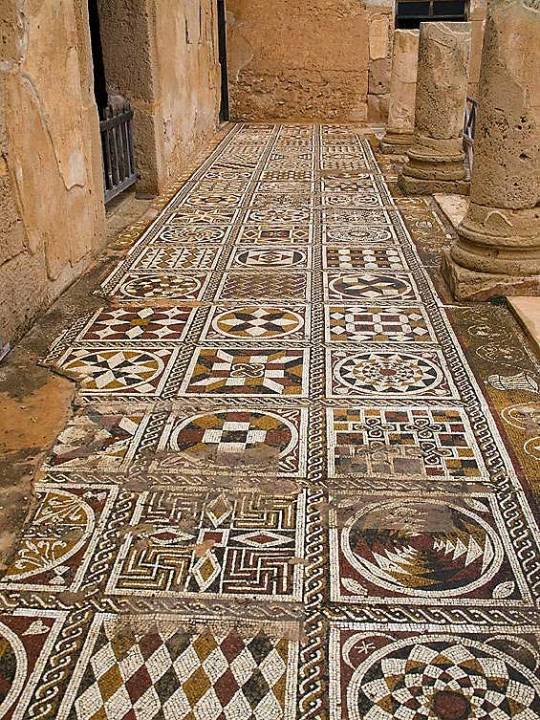
View On WordPress
1 note
·
View note